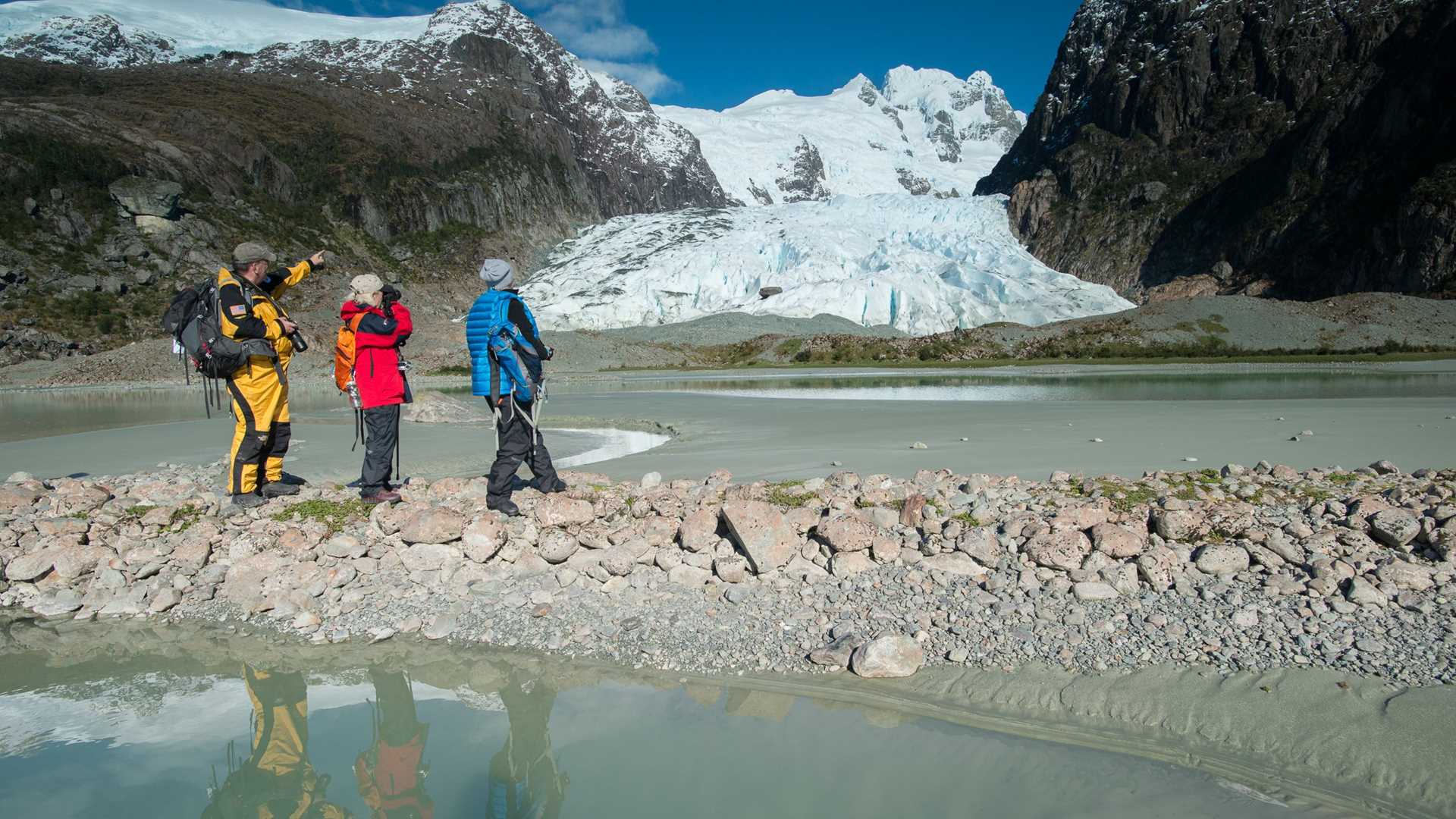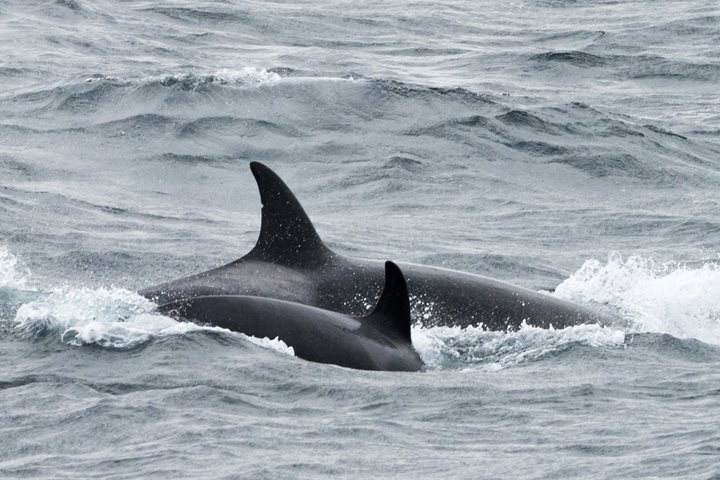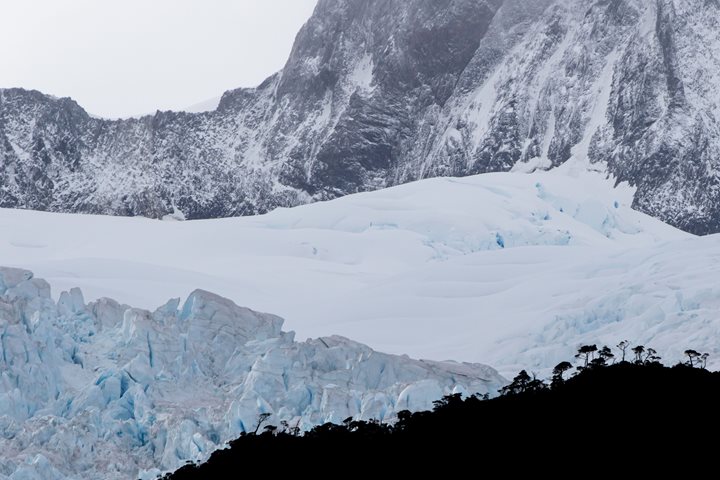The beautiful weather we all enjoyed yesterday continued today. As day broke and the first rays of sun lit up the snow-dusted peaks we could fully appreciate the narrow Montañas fjord that the ship is sailing along. The rocks along the coastline were mostly well rounded and sparsely covered with vegetation, telling us that once they felt the full strength of huge glaciers which carved out these landscapes. Further in, the slopes rose ever steeper and the tops of the mountains became jagged and covered in ice. More glaciers appeared, some tumbling down to the shoreline. Occasionally huge boulders and smaller rocks could be seen strewn about the shore and as we drew abeam of them glaciers could be seen back from the main coast; these have retreated and small tidal lagoons could be seen. As the sun rose and the large moon set, we were left speechless at the incredible beauty of the glowing snow and ice, as well as the green and brown reflections from the coastal rocks and trees on the flat calm waters. Off in the distance the mountains were covered by extensive fields of ice.
By breakfast time we were in sight of the Bernal Glacier, our destination for the morning, and a short distance from our landing site. The colors from the ice now added to the rich reflections in the waters. We sighed deeply and reluctantly left all this magnificence to get some breakfast before heading off ashore.
Our time ashore was wonderful. We landed on a rocky shoreline and a few bumpy paces away we took a well-marked path which led us into a small forest of evergreen and Antarctic southern beech trees. They were small, in all probability caused by the fiercely strong winds which usually buffet these southern places. We then left the forest and came upon a couple of lagoons, their waters filled with glacial flour and as it was low tide the shoreline was made up of this fine silt material. There were little ripples which made lovely patterns and the myriad reflections from the still waters entertained and occupied the photographers a good while.
A little further along the way we came face to face with the glacier itself. The whites and blues of the ice looked almost as if they had been lit up. This was indeed a very special morning and was not over yet; for today these special conditions allowed us to also kayak or take a Zodiac cruise and both of these experiences were greatly enjoyed by all those who partook of them; judging by the oohs and aahs!!
During lunch we headed further north up the fjord until the charts revealed no more soundings and we had to turn around and head back from whence we came. Along the way we passed numerous glaciers and majestic snow-clad mountains.
By late afternoon we were close to the White Narrows, a particularly narrow channel that we needed to get through in order to reach Puerto Natales. Two Zodiacs were dispatched to check the right moment for the ship to be able to sail through the passage and film the event. It is only possible for a ship to sail this body of water at slack tide, for once the tide changes the currents can reach speeds of 12 to 14 knots!
Once the chief officer in one of the Zodiacs radioed that all was okay the ship headed through the narrows. It is very impressive to witness and everybody was on deck to marvel at the beauty and watch the expert navigation firsthand. Once through, the body of water opened up and we were able to complete our journey under more normal circumstances. By the end of dinner we were safely tied up alongside one of the piers of this southern Chilean city.
Not long after dinner all was quiet on board the National Geographic Explorer as tomorrow we will be awoken early for the much expected adventure to Torres del Paine National Park. We headed for bed as the beautiful colors of the sunset gave way to the inky blues of night.










